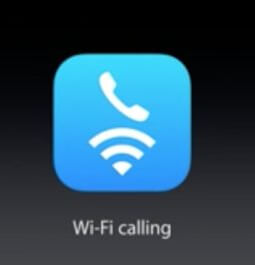 Verizon has announced that beginning this week, it will at last begin to support Wi-Fi calling!
Verizon has announced that beginning this week, it will at last begin to support Wi-Fi calling!
Wi-Fi calling (also known as "voice over WiFi" or VoWiFi) is a technology that allows for cell phones to fall back to Wi-Fi networks to place and receive calls and text messages when cellular signal is lacking.
For nomads who are often in weak signal areas, with Wi-Fi calling enabled your phone will still work as normal even if it has no useable cellular signal, as long as a hotspot is in range.
T-Mobile has long been the leader in VoWiFi, with full support for this feature built in to every T-Mobile phone since September 2014.
Sprint has had more limited VoWiFi support on a handful of phones for a long while now, but has been ramping up support over the past year too.
AT&T enabled Wi-Fi calling on iPhone 6 models with the release of iOS 9 in October, with more phones planned to be supported in the future.
And now with Verizon on board - all four of the major carriers have embraced this technology!
Wi-Fi Calling on Verizon
Verizon is unfortunately starting slow - and initially only two phones will be supported:
Wi-Fi Calling will initially be available on the Samsung Galaxy S 6 and Samsung Galaxy S 6 Edge and will be rolled out as a software update in phases. Additional Android and iOS devices will receive Wi-Fi Calling capabilities via future software updates expected early next year.
To activate Wi-Fi Calling on Android, customers must first download and install the latest software update and turn on Advanced Calling from the settings menu. Once Advanced Calling is enabled, customers can activate Wi-Fi Calling. When a customer uses Advanced Calling on our 4G LTE network and travels outside of coverage, the call will seamlessly transfer to a known Wi-Fi hotspot when available.
The software update enabling Wi-Fi calling will be available starting December 8th, if you have a compatible phone.
The Verizon Messages app for Android and iOS has also been recently updated to allow Verizon customers to make and receive calls using their Verizon number over Wi-Fi on a wider ranger of devices (including tablets and PCs and Macs), but it is not integrated seamlessly into the regular phone dialer experience, and reportedly is a very clunky experience.
Why Wi-Fi Calling Rocks For RVers
To help ensure better coverage while traveling, a lot of RVers keep multiple carriers on board so that there is a better chance of at least one being able to get connected.
With Wi-Fi calling - if your phones on one carrier have no signal but your hotspot on another does, your voice calls will still go through. As long as one carrier in your rig is working and able to create a hotspot, you are good to go.
And even if you do not embrace multiple carriers - for those who have cellular boosters, a booster in the tech cabinet will help your hotspot and router stay connected, while at the same time a phone in your pocket or on your desk may be lacking cellular signal entirely.
But with Wi-Fi calling - your pocket will still ring, and you will not miss a call!








 Mobile Internet Resource Center (dba Two Steps Beyond LLC) is founded by Chris & Cherie of
Mobile Internet Resource Center (dba Two Steps Beyond LLC) is founded by Chris & Cherie of